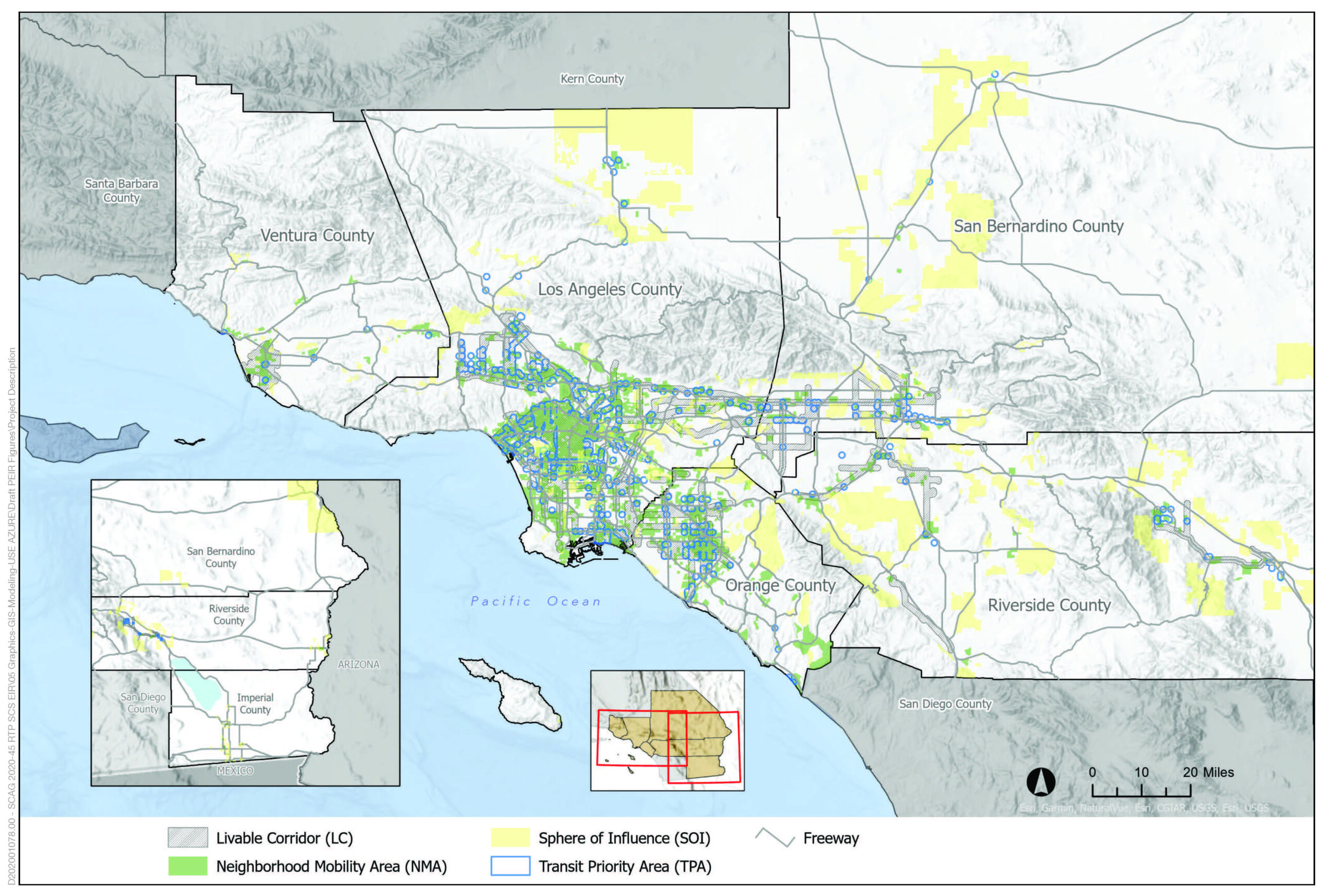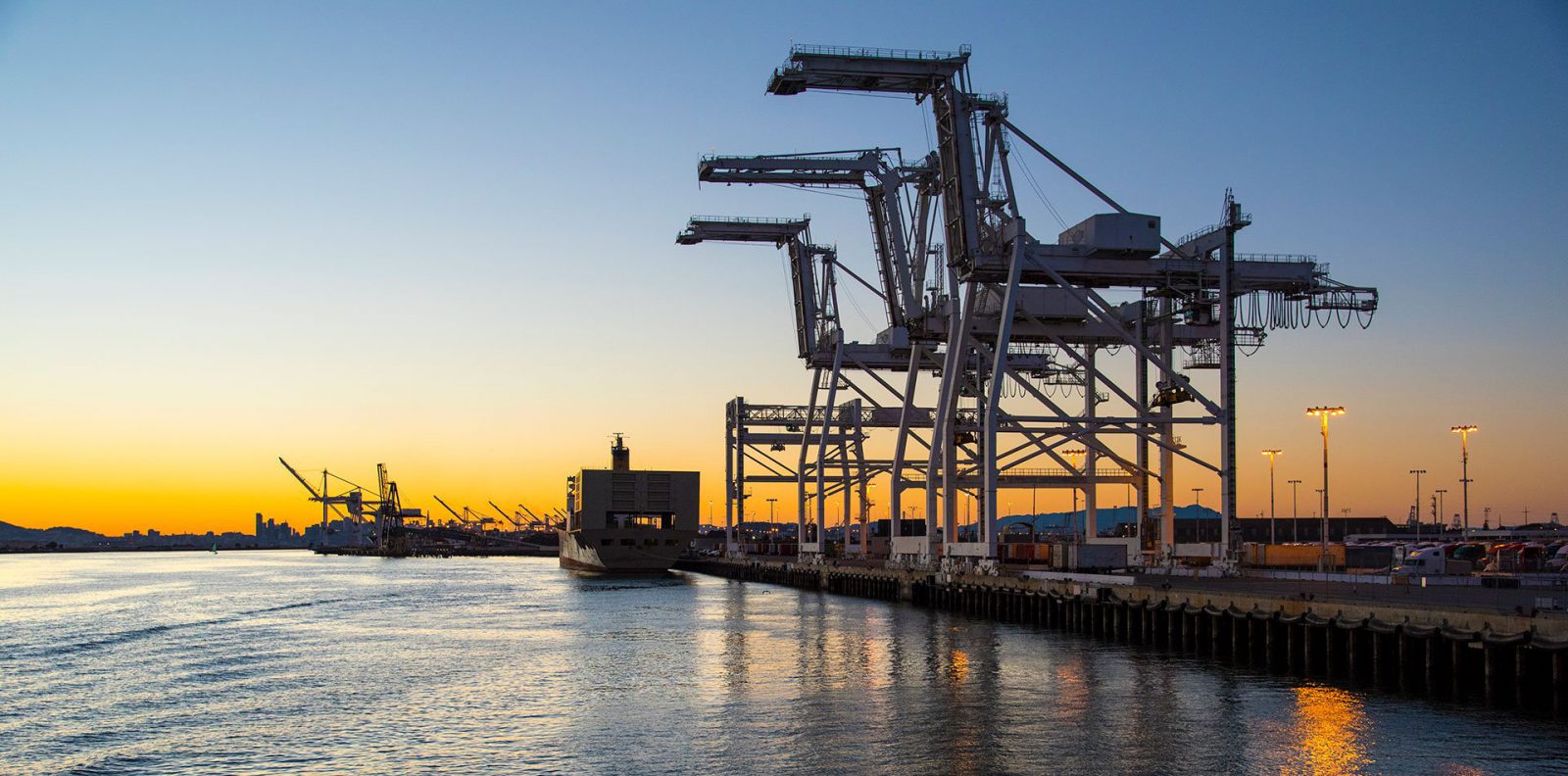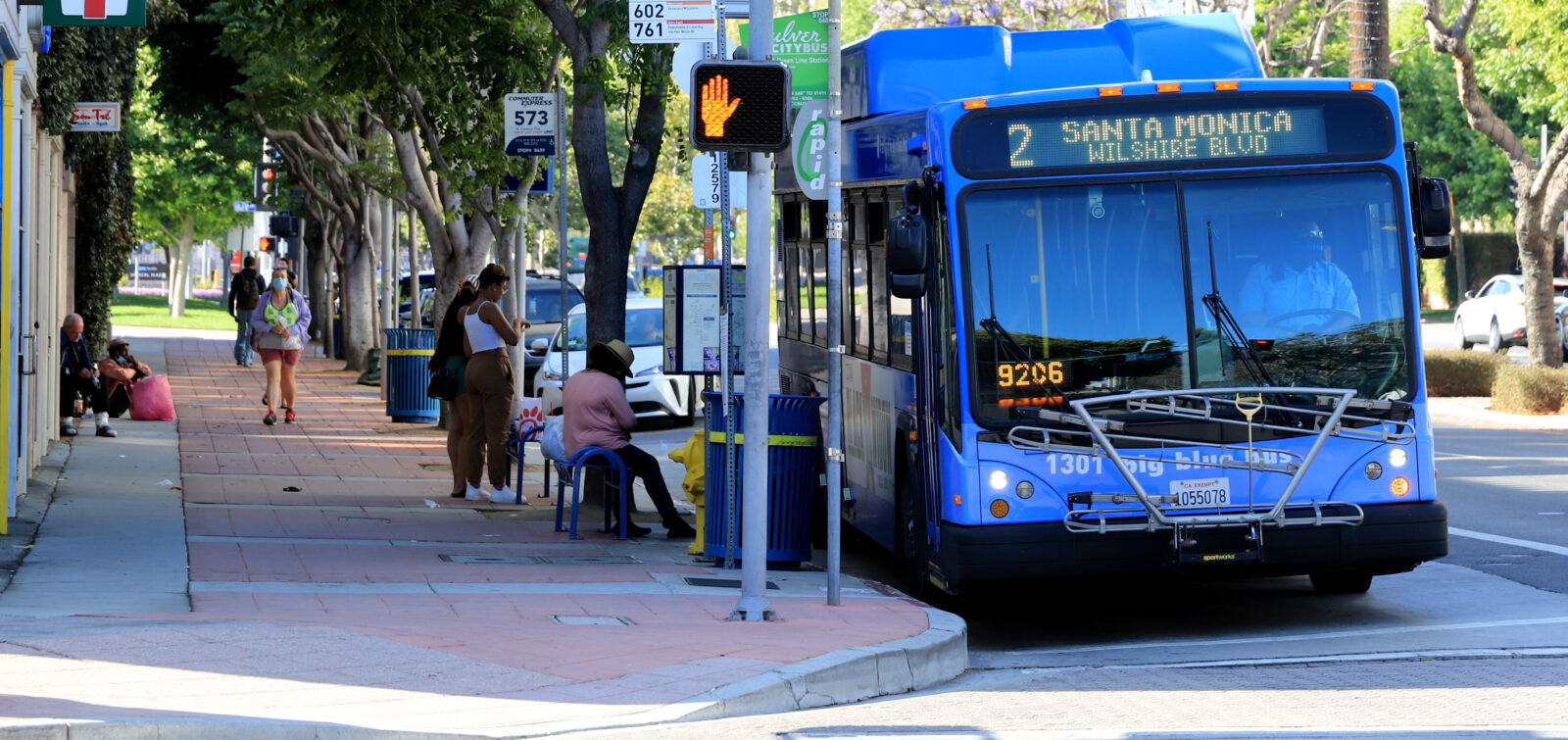On April 4, 2024, the Southern California Association of Governments (SCAG) Regional Council adopted the 2024–2050 Regional Transportation Plan/Sustainable Communities Strategy (RTP/SCS), also referred to as Connect SoCal 2024, or the Plan) and certified the associated Program Environmental Impact Report (PEIR), which was prepared by ESA and its subconsultant team. The Plan and PEIR represent the culmination of four years of development.
Setting a Transportation Vision for the Next 25 Years
Every four years, SCAG updates Connect SoCal, as required by federal and state regulations, which call for the metropolitan planning organization to prepare and update the long-range RTP/SCS. The Plan was developed through a planning process, requiring collaboration with more than 190 jurisdictions and involving rigorous technical analysis, extensive stakeholder engagement, and robust policy discussions with local elected leaders.
Connect SoCal 2024 outlines a vision for a more resilient and equitable future, with investment, policies, and strategies for achieving the region’s shared goals through 2050. The Plan considers all modes of transportation, federal planning factors, and goals and objectives outlined in the California Transportation Plan.
It aims to guide the development, management, and operation of transportation systems and facilities that will serve as an intermodal transportation network for the SCAG metropolitan planning area. Additionally, it lays out a forecasted regional development strategy to achieve GHG emissions reduction targets set by the California Air Resources Board when integrated with the transportation network.

Fundamentally, the 2024 PEIR and its underlying studies provide a comprehensive analysis of the potential effects of implementing the Plan’s listed transportation projects. It includes mitigation measures for SCAG and local agencies to adopt and implement to address regional impacts and apply to future transportation and urban development projects.
Effects resulting from urban development are also considered, and the PEIR is consistent with regional development planning and implementation strategies.
Many Factors to Consider
The conditions of the region’s mobility, communities, environment, economy, and impacts of local agency decisions are all intertwined. Investment decisions for the region’s transportation system impact the quality of the environment and the resilience of the regional economy, while decisions about how to develop the region’s communities impact the demands on the transportation system and residents’ access to opportunities.

According to SCAG Executive Director Kome Ajise, “The Plan’s adoption positions the region for continued expansion of the transit backbone and active transportation networks; thus, enhancing choice in mobility. The Plan also ensures our region can access billions of dollars in transportation and housing funds to meet our mobility, communities, environmental, and economic goals.”
Working Under a Tight Deadline
The planning team had to balance multiple demands on a tight schedule during the preparation of the Plan and PEIR. This involved strict schedule constraints associated with RTP/SCS adoption and incorporation of SCAG-generated data, while providing adequate time for legal review and quality control for the document. The planning team also had to respond to public comments and address SCAG’s updated modeling results. The ESA team went through a robust effort of concurrent preparation of comment responses and the other necessary components of the Final PEIR in order to achieve the schedule milestones.
The PEIR is Certified

ESA submitted the proposed 2024 Final PEIR to SCAG on March 25, 2024, and subsequently delivered the Certified 2024 PEIR documents to SCAG on April 4, 2024, following certification by the Regional Council.
As noted by Karen Calderon, SCAG Project Manager for the Connect SoCal 2024 PEIR, “this was an amazing team and while we always have twists and turns, I always knew I could count on ESA to overcome any obstacle. I truly appreciate all your hard work and dedication to the success of this project…this has honestly been one of the easiest cycles for us and that is in large part thanks to the commitment and dedication of this team!”
ESA’s specialists provide planning and environmental consulting services to help clients in large-scale regional planning efforts and processes. To learn more about how our technical specialists can support successful planning and policy development, anticipate key project-related issues and concerns, streamline the environmental review process, and develop creative mitigation strategies and solutions, contact David Crook.








